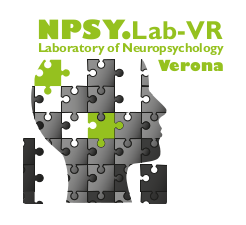Authors: Scandola M, Togni R, Tieri G, Avesani R, Brambilla M, Aglioti SM, Moro V Abstract Despite the many links between body representation, acting and perceiving the environment, no research has to date explored whether specific tool embodiment in conditions of sensorimotor deprivation influences extrapersonal space…
Categoria: Paper
Anticipation of wheelchair and rollerblade actions in spinal cord injured people, rollerbladers, and physiotherapists.
Authors: Scandola M, Aglioti SM, Avesani R, Bertagnoni G, Marangoni A, Moro V. Abstract Embodied Cognition Theories (ECT) postulate that higher-order cognition is heavily influenced by sensorimotor signals. We explored the active role of somatosensory afferents and motor efferents in modulating the perception of actions…
Reading the Mind in the Touch: Neurophysiological Specificity in the Communication of Emotions by Touch
Authors: Kirsch LP, Krahé C, Blom N, Crucianelli L, Moro V, Jenkinson PM, Fotopoulou A. Abstract Touch is central to interpersonal interactions. Touch conveys specific emotions about the touch provider, but it is not clear whether this is a purely…
Modulation of somatoparaphrenia following left-hemisphere damage
Authors: Daniela D’Imperio, Giampaolo Tomelleri, Giuseppe Moretto & Valentina Moro Abstract Somatoparaphrenic symptoms after left-hemisphere damage are rare. To verify the potential role of body-related sensory (proprioceptive, visual, and somatosensory) manipulation in patients experiencing sensations of hand disownership, the symptoms…
Modulating Anosognosia for hemiplegia: the role of dangerous actions in emergent awareness
Authors: D. D’Imperio, C. Bulgarelli, S. Bertagnoli, R. Avesani, V. Moro Abstract Anosognosia for hemiplegia is a lack of awareness of motor deficits following a right hemisphere lesion. Residual forms of awareness co-occur with an explicit denial of hemiplegia.…
Corporeal illusions in chronic spinal cord injuries
Authors Scandola M, Aglioti SM, Avesani R, Bertagnoni G, Marangoni A, Moro V. Abstract While several studies have investigated corporeal illusions in patients who have suffered from a stroke or undergone an amputation, only anecdotal or single case reports have…
Visual and cross-modal cues increase the identification of overlapping visual stimuli in Balint’s syndrome
Authors Daniela D’Imperio, Michele Scandola, Valeria Gobbetto, Cristina Bulgarelli, Matteo Salgarello, Renato Avesani & Valentina Moro Abstract Introduction: Cross-modal interactions improve the processing of external stimuli, particularly when an isolated sensory modality is impaired. When information from different modalities is…
Self-grounded vision: hand ownership modulates visual location through cortical beta and gamma oscillations
Authors: Nathan Faivre, Jonathan Doenz, Michele Scandola, Herberto Dhanis, Javier Bello Ruiz, Fosco Bernasconi, Roy Salomon and Olaf Blanke Abstract: Vision is known to be shaped by context, defined by environmental and bodily signals. In the Taylor illusion, the size…
Apparent Biological Motion in First and Third Person Perspective
Authors Emmanuele Tidoni, Michele Scandola, Veronica Orvalho, Matteo Candidi Abstract Apparent biological motion is the perception of plausible movements when two alternating images depicting the initial and final phase of an action are presented at specific stimulus onset asynchronies. Here,…
Motor Versus Body Awareness: Voxel-based Lesion Analysis in Anosognosia for Hemiplegia and Somatoparaphrenia Following Right Hemisphere Stroke
Authors Valentina Moro, Simone Pernigo, Manos Tsakiris, Renato Avesani, Nicola M.J. Edelstyn, Paul M. Jenkinson Aikaterini Fotopoulou Abstract Anosognosia for hemiplegia (AHP) is informative about the neurocognitive basis of motor awareness. However, it is frequently associated with concomitant symptoms, such…
